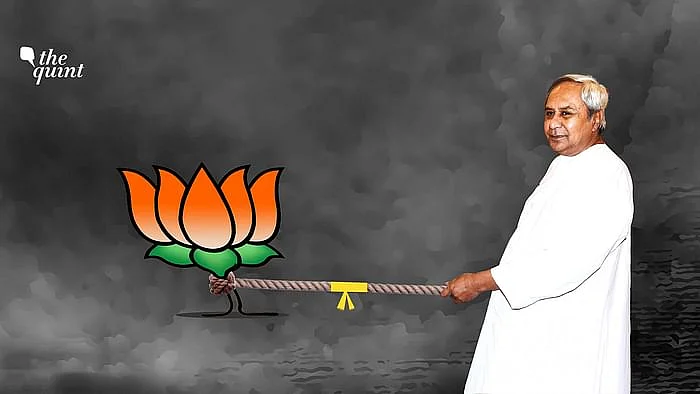With little space for a curtain call in West Bengal, the Bharatiya Janata Party (BJP) may shift its focus to another non-BJP eastern state — and that’s Odisha — where it has, however, failed three times to make a dent in the bastion of the Naveen Patnaik-led Biju Janata Dal (BJD) government in the last three general elections.
There are several factors the BJP should not ignore, as to why the story in Odisha cannot be the same as that of West Bengal.
In Bengal, the saffron party, in spite of not being able to prevent Mamata Banerjee’s return to power, has considerably improved their presence, from 3 seats in the Assembly to 77. This is a colossal improvement, which has helped it become the main opposition in Bengal, and the significance of its gains is also likely to weigh on the ruling Trinamool Congress (TMC).
But here in Odisha, if Naveen Patnaik succeeds in camouflaging his government’s drawbacks and highlighting his successes, then the BJP may again have to bank heavily on the Congress vote bank in the eastern state.
As far as Odisha is concerned, its chief minister is well versed in the saffron ideology and not alien to the BJP’s strategic prowess.
During the 2014 general elections, Odisha witnessed a campaign by the BJP that was literally a blitzkrieg, with its principal strategist Amit Shah going hammer and tongs to unnerve the BJD. Shah’s barb, that the Naveen Patnaik government is like a “burnt transformer and is required to be thrown into the Bay of Bengal,” continues to echo in Odisha’s political circles.
How Odisha CM is Different from Bengal CM Mamata
There is a marked difference however, in how Naveen Patnaik and Mamata Banerjee react to barbs thrown at them by opposition parties in their respective states. Since the start of his political career 21 years ago, Naveen Patnaik has never reacted in a volatile manner nor has he used strong or dramatic language. In fact, he barely reacted to Shah’s “burnt transformer” jibe.
Patnaik always turned a deaf ear to jeers and proved his detractors wrong by his developmental fact sheet. This is however, not the case with Mamata Banerjee.
Unlike Ms Banerjee, Naveen Patnaik has always managed to stay poised and keep his cool.
A prolonged silence interspersed with occasional smiles through the wind-shield was the image of 76-year-old Naveen Patnaik, who undertook a bus journey of over five to six thousand kilometres during the 2019 general election campaigns, taking on the BJP headfirst.
There is also no doubt that during the 2020 COVID-19 pandemic, Naveen Patnaik did much to contain the spread and prevent it from becoming uncontrollable unlike many other states which crumbled even then.
However, the second COVID wave has changed things a bit. The Odisha government’s image currently has suffered a dent, with a 10 to 23 percent infection rate since the last 20 days, and the death toll climbing.
Naveen Patnaik Must Be Wary of Anti-Incumbency
Seeking a mandate for the sixth consecutive terms will be difficult for Naveen Patnaik and several factors will come into play, that the BJD must be cognisant of.
Anti-incumbency is a major factor that should worry Patnaik, and it remains to be seen if he has any other tactics in his political armour to counter the saffron surge in Odisha.
What often worries political analysts is the absence of a succession plan in the BJD, and in response to that question, Patnaik always has a one liner — “it is for the people to decide”.
This is perhaps one reason why a few political aspirants got disillusioned with him much before they should have. But no turncoat from the BJD has been able to prove their worth without the ‘Naveen tag’.
One thing can work in BJD’s favour; in Odisha, BJP’s religious fire-power and caste-centric politics may not have much sway.
Even so, there are a host of issues the BJP can target. From crimes against women to failures in law and order, and the problem of unemployment — Naveen Patnaik has a lot to answer for.
The setback in the Bengal elections has caused the BJP much grief, and it cannot afford to be lax in Odisha. It is likely to scratch some old wounds to ensure Patnaik’s back is to the wall.
Whatever be the case, Naveen Patnaik cannot afford to let his guard down and must draw the roadmap at the earliest.
(Dinendra Narayan Singh is a Bhubaneswar-based senior journalist and political analyst. This is a report and analysis. The views expressed are the author’s own. The Quint neither endorses nor is responsible for them.)
